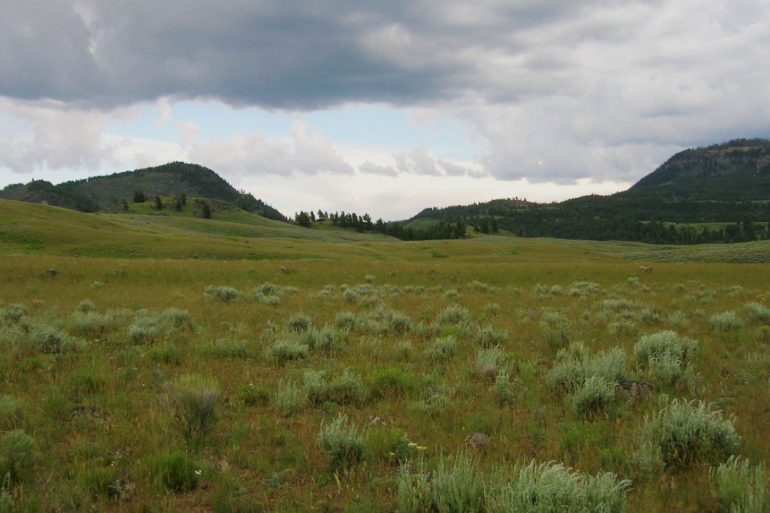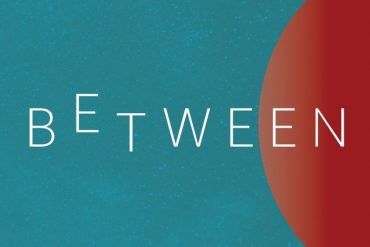Grizzlies are wilderness incarnate.
– Doug Peacock, Grizzly Years
In September of 2003, Timothy Treadwell and his companion, Amie Huguenard, were mauled and eaten by a grizzly bear in the Alaskan wilderness. An amateur filmmaker and fiercely independent environmentalist, Treadwell believed he possessed both a special connection with and a distinguished duty to the wild, particularly to grizzlies. This vocation, he believed, required that he live and film the bears in their natural habitat over what turned out to be the last thirteen summers of his life. Treadwell’s story is vividly portrayed in Werner Herzog’s captivating documentary, Grizzly Man, a film that arranges and commentates on Treadwell’s own footage. Treadwell’s video diary reveals a complex character with passionate motivations, deep inner conflicts—likely even mental health issues—but most of all, a contagious spirit of gratitude for the wild.
Herzog’s documentary both charms and fascinates by splicing together Treadwell’s solitary, and often vulnerable, camera-lens confessions with breathtakingly beautiful shots of the bears and the Alaskan landscape. Treadwell plays, postures, rants, rages, and confesses his insecurities and fears; through it all styling himself as the protector, advocate, and even, friend of the bears. On first viewing, the rare beauty of the original footage, his quirky personality, and the viewer’s anticipation of his sensational death, together overshadow the subtle, theologically-significant theme that sustains the film, namely the constancy of Treadwell’s gratitude for the irreducibility of the wild. Treadwell’s footage, and at times his commentary, evoke a vision of mystery and goodness in a part of the world unstructured by human culture. One need not designate him as a martyr to recognize the symbolic possibility of embodied self-sacrifice contained in his testimony. Despite Timothy Treadwell’s many eccentricities, his life ultimately bled out as a testimony to the non-instrumental reasons of gratitude. For some of us, it may not be clear whether we have more prudence than Treadwell or simply lack his courage.
The views of nature in Grizzly Man are not without troubles. On the one hand, Treadwell romantically anthropomorphizes the Alaskan wildlife, and presents a persistent rhetorical assault on Western technological society. As a result, Treadwell’s passionate monologues elicit both sympathy and scorn, often simultaneously. In Herzog’s presentation, we are tempted to see Treadwell as a lovable dunce, one whose view of reality is tragically flawed on account of misdirected passions. Viewers are initially drawn in by his enthusiasm but eventually pushed away by the degree of its intensity. On the other hand, Herzog’s directorial editorializing gradually builds to a clearly oppositional stance. While Herzog admires Treadwell’s filmmaking, the director remains emotionally detached and he openly despises Treadwell’s motivations and resulting actions. For instance, early in the film, Herzog comments that while Treadwell felt truly at home in the wilderness, he also crossed an “invisible borderline” between humans and wild nature. As the film progresses, Herzog’s editorializing becomes heavy-handed: he states, “I believe the common denominator of the universe is not harmony, but chaos, hostility, and murder.” Late in the film, Herzog ruminates on the gaze of the grizzly bear, stating, “I see only the overwhelming indifference of nature. To me there is no such thing as the secret world of the bears, and the blank stare speaks only of a half-bored interest in food.” Despite the gulf between their respective presuppositions, it is striking that both men view wildness and wilderness through a moral lens: for Treadwell it is harmony and for Herzog chaos; friendship versus struggle. Taken as representative figures, Herzog and Treadwell enact a fundamental conflict over the relationship between “nature” and humanity in ecological debates.
Interestingly, the heuristic categories of the “natural” and the “built,” presumed by both men, ironically reinforce a fundamental dualism that most environmentalists reject. Humans are set apart from nature. Yet even the ecological ethicist is tempted to emphasize the difference of nature as a strategy for preserving its integrity against the expanding encroachment of human consumptive desires. Treadwell, for example, saw himself as a convert to a pure wilderness sanctuary, an exile from a technological culture that had alienated itself from natural harmony. Alternately, Herzog’s view of human society suggests progress from a primordial chaos characterized only by struggle and murder—wilderness as a site of terrors. Despite their clear divergence on the value of wilderness, both perspectives reinforce the notion that human culture is entirely separate from the natural world.
Thirteen years before the release of Grizzly Man, Doug Peacock published an eloquent but punchy collection of essays on his encounters with grizzly bears in the western United States. Like Herzog’s Grizzly Man, Peacock’s Grizzly Years: In Search of American Wilderness draws the reader in to a solitary world of an individual. In this case, Peacock goes to the wilderness to fight the demons of a dehumanizing war. Peacock was a close friend of Ed Abbey and was the inspiration for Abbey’s misanthropic protagonist, Hayduke, in The Monkey Wrench Gang. As in the case with the fictional character, Peacock is a veteran of the Vietnam War who is haunted by his actions and, upon his return, thoroughly alienated from the consumer culture that sent him, and many others who would not return, overseas to fight a pointless war. Peacock articulates his wilderness therapy thus:
The bears provided a calendar for me when I got back from Vietnam, when one year would fade into the next and I would lose great hunks of time to memory with no events or people to recall their passing. I had trouble with a world whose idea of vitality was anything other than the naked authenticity of living or dying. The world paled, as did all that my life had been before, and I found myself estranged from my own time. Wild places and grizzly bears solved this problem.
This therapy, however, could not be sustained as escape. Rather, as he spent more time in the backcountry he came to realize how his place there was influenced by the culture that crowded in, by the human trace that disrupts the sense of wildness and ultimately poses a threat to the continued existence of the bears. Peacock writes,
In the beginning, I went into the wilderness to regroup and pull my life together. But it was soon clear that there would be no hiding. Any image of grizzly country as an Eden walled off from a troubled world was a distortion of truth. Not every journey felt primordial, and no trip unfolded as a simple natural idyll in a vacuum. Although I found moments dominated by wild beauty, cultural distractions—the sound of distant aircraft or scraps of human debris—intruded on every day. I might not have seen these forces at work, but I was always aware they were shading what I saw and influencing how I acted.
In the prefatory pages of Peacock’s work, a selection is lifted from an account included later in the book, one that sets the tone for the series of narratives that span the 1960s through the 1980s. The story goes as follows. When he first began his wilderness therapy, Peacock still carried firearms in the backcountry—a connection to his identity as a soldier and for the purpose of self-defense, against other humans and predators. The short narrative that opens the book finds Peacock thirty feet from a large grizzly bear, having just drawn his .357 Magnum: “We stared at each other for what might have been seconds but felt like hours.” In that adrenaline-filled moment as he was confronted by a very real mortal danger, Peacock realized that his “shooting days were over” and he lowered his weapon. In a moment, the encounter was over:
I felt something pass between us. The grizzly slowly turned away from me with grace and dignity and swung into the timber at the end of the meadow. I caught myself breathing heavily again, the flush of blood hot on my face. I felt my life had been touched by enormous power and mystery.
A kind of primal intimacy overwhelms the two mammals in an instant. The powerful sidearm was certainly a threat to the well-being of the bear, but not an insurance policy by any means—the grizzly bear is fully equipped to keep his position at the top of the food chain. To give perspective, an adult grizzly can weigh in at 800 pounds and is capable of sprinting at upward of thirty miles an hour. In other words, an encounter with a grizzly at a mere thirty feet is incredibly dangerous. But what was first a threat becomes a revelation of grace:
The grizzly radiated potency. He carried the physical strength and thorniness of disposition that allowed him to attack or kill most any time he cared. But, almost always, he chose not to. That was power beyond a bully’s swaggering. It was the kind of restraint that commands awe—a muscular act of grace.
The intensity of this encounter solidified Peacock’s calling as an amateur naturalist who would study bears for several decades. He traded in his firearms for cameras and video cameras, spending his summers up in the mountains tracking and documenting grizzly activity.
As with Treadwell, Peacock was intent on recovering and then preserving an attitude of awe and mystery with regard to majestic wild creatures in wild places. Peacock articulates his calling in this way:
I wanted to learn from the bears themselves and was wary of the limits of scientific inquiry. Traditional Blackfeet saw the natural world in terms of awe and mystery. Animals lived in metaphorical relationships to them; the creatures were other nations. Every plant and animal passed coded information to a man. Part of the price western science has paid for analytical power is that it has transformed the natural world into something alien.
The difficulty of adequately describing humankind’s continuity and divergence to the natural world is one of the fundamental challenges of environmentalism and it is at the heart of debates over the preservation of wilderness.
Attention to both continuity and divergence is also a prerequisite for the articulation of gratitude that does not eschew what Peacock calls a “spectrum of wilderness possibilities.” On Peacock’s diagnosis,
We keep eliminating the wildest option: the original landscape we called home for all but a heartbeat of history. The trend is toward a homogeneously mediocre experience, a woods safe only for recreational diversion. Such a place need not include risk and unpredictable things like grizzly bears.
The philosopher James Hatley plays with this element of risk and its connection to gratitude in his creative exploration of the tension between continuity and divergence in the essay, “The Uncanny Goodness of Being Edible to Bears.” Hatley describes the relation of nature and culture as a “complexity of boundaries, an intertwining of one order with another in numerous dimensions.” In other words, there is an inevitable struggle for the goods essential for survival and flourishing. In the wilderness, the human person can benefit another animal in the most innocent and essential manner, namely in the sustenance of a meal. There is no clear bifurcation between means and ends in an ecological perspective that recognizes wild nature as good in itself. What is required, Hatley writes, is “a sensitivity of judgment in regard to uncannily incommensurable and competing claims.” I am calling such sensitivity gratitude.
Significantly, Hatley suggests that wilderness is where incommensurability is most apparent:
Wilderness seems to be the only place left on the earth where human beings might be eaten, and no one takes exception to it. In noting this, the emphasis is to be put upon might. While we would take exception to situations where wild animals undoubtedly would treat us as food, we do not take exception to at least some situations where wild animals might treat us as food but probably will not. Paradoxically, many who enter the wilderness welcome the threat of being eaten by a bear or mountain lion, even as they fear its occurrence and act in ways designed to keep it from happening.
Two terms are significant for this passage. First, and most obvious, the emphasized might is central. While one should not celebrate the gruesome death of Timothy Treadwell, we can celebrate a world in which this might happen. Recognizing a continuity between animal flesh, and the goods that sustain our shared life, it is possible to celebrate a world that is not merely reducible to human desire for safety and sustenance. The continuity of all flesh is an idea that Treadwell only wanted to affirm for the human beings who leave society. In identifying with the bears, Treadwell tried to authentically embrace this idea, a lifestyle choice that carried a strong element of risk. I do not mean to suggest that we empathize with the bear that consumed Treadwell and Hugenaard, for instance—though this might be possible—but rather to affirm that we can celebrate a world that exceeds human interests even when personal safety is at stake. Treadwell wanted to connect with the wild. Edward Abbey describes a similar impulse with regard to a first encounter with a mountain lion: “I felt what I always feel when I meet a large animal face to face in the wild: I felt a kind of affection and the crazy desire to communicate, to make some kind of emotional, even physical contact with the animal.” Treadwell’s tragic trouble, though, ultimately arose out of a confusion about the limits of responsiveness with regard to the risks and revelations of the wild manifested in the wilderness. The wilderness, as the domain of the wild, calls for a form of responsiveness that is different in scope, though not in kind, to the responsiveness practiced in human society. This idea is connected to the second significant term in the above quote, that when we enter the wilderness, we welcome the risks that are characteristic of the lawlessness of the wild. Entrance to wilderness requires a welcoming of that reality. Seen from this way, the grizzly that mauled and consumed Treadwell and Hugenaard is no murderer (as Herzog would have it), but is rather a grizzly who did what a grizzly is made to do.
In his essay, James Hatley reflects on Scott McMillion’s riveting text Mark of the Grizzly: True Stories of Recent Bear Attacks and the Hard Lessons Learned. The striking, shared characteristic of the personal stories in that volume is that survivors rarely blame wild bears for attacks on human interlocutors. Instead, survivors readily express regret for the extermination of killer bears, gratitude for the remaining bear populations, and a renewed desire to protect the spaces that make the life of the bears possible. Interestingly, these responses lead Hatley to conclude with the introduction of a laden and theologically significant term, covenant:
In covenant, we find ourselves continually in transition between two spaces—one in which predation is asymmetrical and the other in which predation is reflexive. Only if we have the courage, the reference, and the wisdom to move from a space in which we are not potentially prey to one in which we can become prey, can we find ourselves addressed by the goodness of the bear and ultimately by an aspect of our own goodness that we otherwise would forget.
The possibilities of this covenantal sensitivity to goodness, which follows from the determination that humans are not the center of value, comes not by looking outside of human experience (as if this were possible) but precisely by more fully investigating a personal sense of gratitude that arises in appropriately responsive encounters with the wild.





